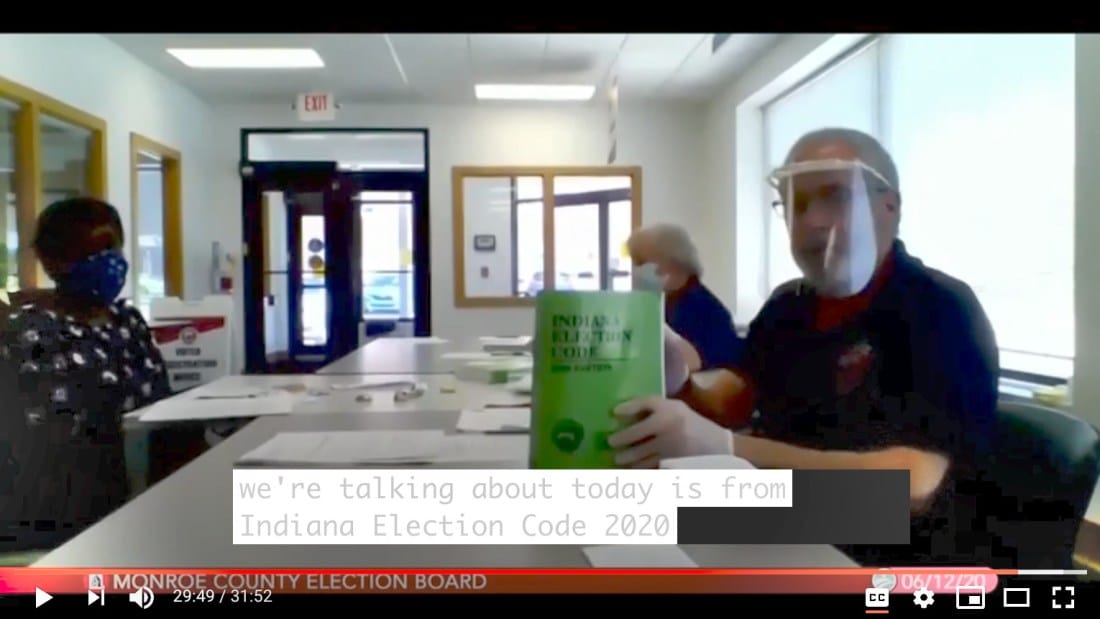Election board OKs 3 of 23 provisional ballots from June 2 primaries


In a Friday afternoon meeting that lasted just a bit over a half hour, Monroe County’s election board reviewed 23 provisional ballots cast at the June 2 primary elections.
That’s about a minute and 20 seconds per ballot.
The board accepted three provisional ballots and rejected the other 20. Provisional ballot review was the only item of business for the three member board, which consists of the county clerk, Nicole Browne, and two members appointed by the county chairs of the two major political parties.
Hal Turner is the Republican Party appointee. Carolyn VandeWiele represents the Democratic Party.
A supply of provisional ballots is required to be kept on hand at polling sites, in case any challenge is made to someone’s right to vote. A voter can always insist on casting a provisional ballot, leaving the decision on whether it counts to a post-election review.
Some election day problems can be remedied by a voter before noon on the second Friday after election day. That’s why the election board’s meeting was scheduled for 12:01 p.m.
One election day problem that can be remedied in the 10 days after election day is the failure to produce an ID when attempting to vote. Six voters cast provisional ballots on June 2 in Monroe County because they didn’t have an ID. Of those, only one came in to remedy the situation before Friday’s meeting.
Some of the reasons that voters resort to voting with a provisional ballot can’t be remedied in the interim, between election day and the board’s review of provisional ballots. If someone isn’t registered to vote in Monroe County, they can’t register after the fact. Seven would-be voters on June 2 fit the category of “not registered” and had their provisional ballots rejected on Friday.
Another eight voters showed up at the wrong polling site on June 2. For this year’s primaries, Monroe County reduced its polling sites from more than 30 to just seven.
That means that most voters cast ballots at a different location from the one to which they were accustomed. The election board sent a mailing to all registered voters with the list of voting locations and placed signs at polling sites that are normally used directing voters to the correct site.
The message on locations didn’t reach every voter. The board rejected the eight ballots from voters who tried to vote at the wrong location because, as Turner put it, “Under state law, we have no alternative.”
Three provisional ballots were remedied in some way and accepted on Friday.
One was accepted because an ID was eventually produced. A second was accepted because it was determined that the voter was, in fact, registered, and had appeared at the correct polling site. The third provisional ballot was accepted because an error in the e-poll book had indicated the person had already voted, when they had not.
VandeWiele remarked that she’d been asked how to remedy not voting on primary election day. The remedy for that, VandeWiele said, is to vote in November.
Voter registration opens next Tuesday, on June 16.




Comments ()